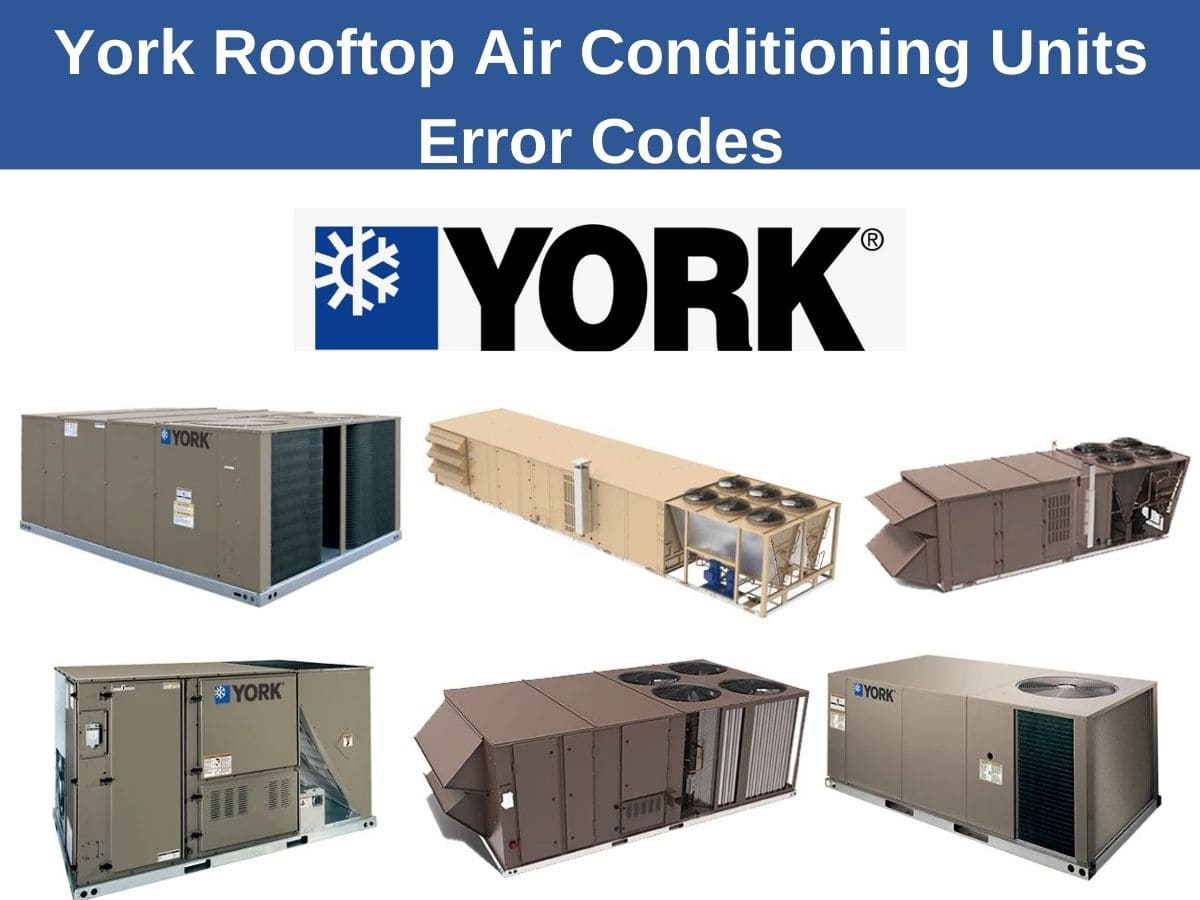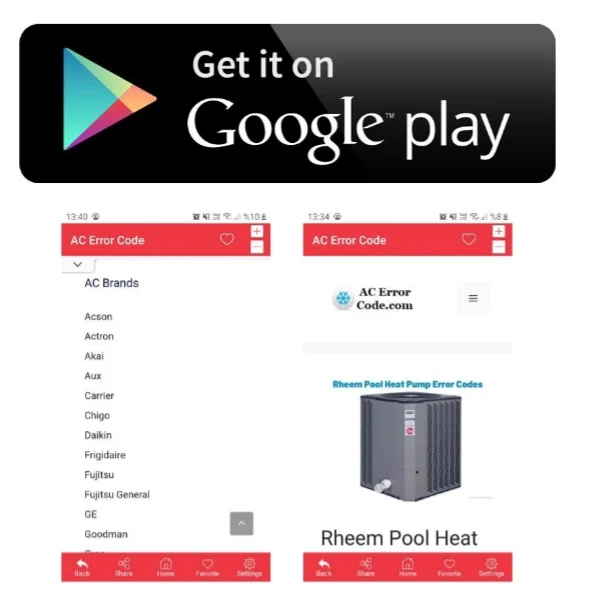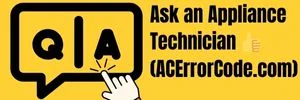An active alarm is represented by a flashing alarm code numeral. There are 43 alarms in all. Not all the alarms are critical enough to shut down the system. Some alarms flag the problem to bring it to the attention of the operator or technician while allowing the system to continue to operate.
Codes List
| Alarm Codes | Description |
|---|---|
| 01 | Compressor system 1 (compressors 1a, 1b) locked out on high pressure control. the circuit opened three times within a 2-hour window. |
| 02 | Compressor system 1 (compressors 1a, 1b) locked out on high pressure control. the circuit opened three times within a 2-hour window. |
| 03 | Compressor system 2 (compressors 2a, 2b) locked out on high pressure control. the circuit opened three times within a 2-hour window. |
| 04 | Compressor system 2 (compressors 2a, 2b) locked out on high pressure control. the circuit opened three times within a 2-hour window. |
| 05 | Compressor system 1 (compressors 1a, 1b) locked out on low pressure control. the circuit opened three times within a 1-hour window. |
| 06 | Compressor system 1 (compressors 1a, 1b) locked out on low pressure control. the circuit opened three times within a 1-hour window. |
| 07 | Compressor system 2 (compressors 2a, 2b) locked out on low pressure control. the circuit opened three times within a 1-hour window. |
| 08 | Compressor system 2 (compressors 2a, 2b) locked out on low pressure control. the circuit opened three times within a 1-hour window. |
| 09 | Compressor system 1a locked out on compressor motor protection module. the circuit opened three times within a 1-hour window. |
| 10 | Compressor system 1b locked out on compressor motor protection module. the circuit opened three times within a 1-hour window. |
| 11 | Compressor system 2a locked out on compressor motor protection module. the circuit opened three times within a 1-hour window. |
| 12 | Compressor system 2b locked out on compressor motor protection module. the circuit opened three times within a 1-hour window. |
| 13 | First stage heating is locked out on limit switch trips. the circuit opened three times within a 1-hour window. |
| 14 | Second stage heating is locked out on limit switch trips. the circuit opened three times within a 1-hour window. |
| 15 | Third stage heating is locked out on limit switch trips. the circuit opened three times within a 1-hour window. |
| 16 | First stage of heating is locked out because the ignition control board failed to turn on the gas valve after 5 minutes of operation or the gas valve has voltage on it and the control is not calling for the stage of heating. |
| 17 | Second stage of heating is locked out because the ignition control board failed to turn on the gas valve after 5 minutes of operation or the gas valve has voltage on it and the control is not calling for the stage of heating. |
| 18 | Third stage of heating is locked out because the ignition control board failed to turn on the gas valve after 5 minutes of operation or the gas valve has voltage on it and the control is not calling for the stage of heating. |
| 19 | Space temperature sensor has failed open or shorted. the display will indicate –40.0. |
| 20 | Supply air temperature sensor has failed open or shorted. the display will indicate –40.0. |
| 21 | Return air temperature sensor has failed open or shorted. the display will indicate –40.0. |
| 22 | Outdoor air temperature sensor has failed open or shorted. the display will indicate –40.0. |
| 23 | Dirty filter switch has closed indicating the filters need replaced. this has no effect on the operation of the unit. |
| 24 | The supply fan binary output has been turned on for 90 seconds and the air proving switch circuit has not closed. |
| 25 | The supply fan binary output has been turned off for 90 seconds and the air proving switch circuit has not opened. |
| 26 | A microelectronics failure has occurred and the control is operating on defaults. |
| 27 | A microelectronics failure has occurred and the control is down due to a fatal fault. |
| 28 | This indicates the supply fan binary output is turned on and the supply fan overload circuit is open. this has to occur 3 times within a two hour window. |
| 29 | This indicates the outdoor air humidity sensor is out of range. when this occurs, the unit controller switches the economizer type to dry bulb. |
| 30 | This indicates the return air humidity sensor is out of range. when this occurs, the unit controller switches the economizer type to single enthalpy. |
| 31 | This indicates the iaq (co2) sensor is out of range. the unit controller changes the ventilation mode to fixed minimum. |
| 32 | This indicates the real time clock cannot be read as a result of a hardware failure. |
| 33 | This indicates the space temperature offset is greater than 20 k ohms. |
| 34 | This indicates the cv/vav input is out of range. the unit will lock out. |
| 35 | This indicates the 24-volt supply circuit has dropped below the allowable level. the control will shut down until the voltage rises above 19.2 vac. |
| 36 | This indicates the unit cooling and heating operation is shut down because the unit is operating in a smoke purge mode. |
| 37 | This indicates the duct static pressure has exceeded the programmed duct static shutdown setpoint. |
| 38 | This indicates the supply air temperature has exceeded the programmed supply air temp alarm setpoint for cooling. |
| 39 | This indicates the supply air temperature has exceeded the programmed supply air temp alarm setpoint for heating. |
| 40 | This indicates an economizer minimum position alarm. |
| 41 | This indicates the space temperature is above the space temp trending alarm temp and moving away from the space temperature setpoint. |
| 42 | This indicates the duct static has not risen quickly enough in a vav unit when the supply fan is energized. |
| 43 | This indicates the hydronic heat freeze stat has opened and the outdoor temperature is below 45.0° f. |
Troubleshooting

Refrigerant System Alarm Codes (01, 02, 03, 04, 09, 10, 11, 12)
The first 12 alarms involve controls intended to protect the compressors. Each compressor system is equipped with external circuitry monitoring hardware intended to protect the compressor in case the operating characteristics of the refrigerant system fall outside the safe operating envelope for the compressor. The type of protection varies depending on the type of compressor used.
Low Pressure Cutout Alarm (09, 10, 11, 12)
Since tandem compressors are used there is a single low pressure switch for system 1 and one for system 2. If
the low pressure switch opens both of the compressors for that system will be turned off. If the low pressure switch for system 1, (compressors 1A, 1B), opens it will generate both a 09 and 10 alarm code. Likewise if the low pressure switch opens for system 2, (compressors 2A, 2B), opens it will generate both an 11 and 12 alarm code.
Limit Switch Alarms (13, 14, 15)
The control monitors the limit switch status for each of the heating sections installed. If the limit switch circuit opens the control de-energizes the heat section output for the section with the open limit circuit and energizes the indoor blower output. The supply fan performs a Fan Delay Off when the limit re-closes.
Gas Heating Alarms (16, 17, 18)
The Unit Controller monitors the output to the gas valve. If the Unit Controller is calling for the operation of the
heat stage and voltage is not present after 5 continuous minutes it will generate an alarm. If the Unit Controller is not calling for the operation of the heat stage and voltage is present at the gas valve for 5 continuous minutes it will generate an alarm and lock on the supply fan. If the input goes away the control will revert to normal operation.
Space Temperature Sensor Alarm (19)
This alarm indicates the space temperature input is either open or shorted. The display will show a value of –40.0° F. The space temperature input is at ST and GND of the P6 connector.
Supply Air Temperature Sensor Alarm (20)
This alarm indicates the supply air temperature input is either open or shorted. The display will show a value of 40.0° F.
Return Air Temperature Sensor Alarm (21)
This alarm indicates the return air temperature input is either open or shorted. The display will show a value of 40.0° F. The return air temperature input is at RAT+ and RAT- of the P11 connector.
Outdoor Air Temperature Sensor Alarm (22)
This alarm indicates the outdoor air temperature input is either open or shorted. The display will show a value of –40.0° F.
Dirty Filter Switch Alarm (23)
This alarm will have no effect on the operation of the unit. The alarm indicates the dirty filter switch contacts have closed indicating the pressure drop across the filters is above the setting of the switch.
Supply Fan Air Proving Switch (24)
This alarm indicates there was a call for supply fan operation and after 90 seconds of supply fan operation the switch did not close. The Unit Controller will retry the fan output every 30 minutes for three retires. If after the three retries the Unit Controller will lockout heating and cooling operation.
Supply Fan Air Proving Switch Closed Alarm (25)
This alarm indicates the call for supply fan operation has been terminated and after 90 seconds of supply fan operation the switch remained closed. The control will fl ash the alarm but allow the unit to operate normally.
Microelectronics Failure Alarm (26)
This alarm indicates a problem with the Unit Controller microelectronics has occurred and the Unit Controller is operating on default values. Try recycling power to the control. If the fault reappears replace the Unit Controller.
Microelectronics Failure Alarm (27)
This alarm indicates a problem with the Unit Controller microelectronics has occurred and the Unit Controller is shut down. Try recycling power to the control. If the fault reappears replace the Unit Controller.
Supply Fan Overload Alarm (28)
The Unit Controller monitors this circuit anytime the supply fan is operative. If this input is lost for 50 milliseconds, the control will shut down all unit operation. If the voltage input does not return in 5- minutes the control will turn on the alarm.
Outdoor Humidity Sensor Alarm (29)
This alarm indicates the outdoor humidity sensor is out of range. When this occurs the Unit Controller will switch economizer operation to Dry Bulb. The Outdoor Humidity analog input is at OH+ wire 333 of the P6 connector and OH- wire 334 of the P6 connector. To trouble shoot the sensor verify 24 VAC between terminals EXC and COM of the sensor. Also verify the VDC between the OUT and COM connection of the sensor. If no voltage is present replace the sensor.
Return Humidity Sensor Alarm (30)
This alarm indicates the return humidity sensor is out of range. When this occurs the Unit Controller will switch economizer operation to Single Enthalpy.
IAQ (CO2) Sensor Alarm (31)
This alarm indicates the IAQ (CO2) sensor is out of range. When this occurs the Unit Controller will switch the ventilation mode from Demand to Fixed Minimum. The IAQ sensor input is at terminal DV+ and DV-. This device is fi eld supplied.
Time Clock Error Alarm (32)
This alarm indicates the Unit Controller Real Time Clock is not functioning. The Unit Controller will shut down all operation. Try recycling power to the control. If the fault reappears replace the Unit Controller.
Space Temperature Offset Alarm (33)
This alarm is generated when the resistance in the Space Temperature Offset circuit is greater then 20,000 ohms. The Space Temperature Offset input is at terminals SSD and GND of the P6 connector.
CV/VAV Input Alarm (34)
This alarm indicates the resistance between terminals CV/VAV and CV/VAV at the P7 connection is out of range. The acceptable range is 0.0 to 20,000 ohms. Check the resistance between the two CV/VAV terminals and take appropriate action.
Low Voltage Alarm (35)
The Unit Controller monitors the 24 VAC input to the control. The input has two thresholds. The voltage must be above 19.2 VAC or the control will not turn on a contactor.
Smoke Purge Mode Alarm (36)
This is not an alarm but rather an indication the unit has been placed in a smoke purge mode. Verify the presence of 24 VAC between PURGE connection at the P3 connector and “C” on the P1 connector.
High Duct Static Pressure Alarm (37)
This alarm indicates the duct static pressure has exceeded the Duct Static Shutdown Set point. The problem could be caused by a faulty Duct Static Pressure Transducer input.
Supply Air Temperature Cooling Alarm (38)
The Unit Controller compares the supply air temperature to the “SUPPLY AIR TEMP ALARM FOR COOLING” and initiates the alarm based on the following criteria:
- All the stages of cooling have been on for 10 or more minutes.
- The supply air temperature is 20 or more degrees above the “SUPPLY AIR TEMP ALARM FOR COOLING” set point for 10 minutes.
- The outdoor air is not 20.0° F or more warmer then the “SUPPLY AIR TEMP ALARM FOR COOLING” set point.
- The outdoor air damper is not open more then 20%.
Supply Air Temperature Heating Alarm (39)
The Unit Controller compares the supply air temperature to the “SUPPLY AIR TEMP ALARM FOR HEATING” and initiates the alarm based on the following criteria:
- All the stages of heating have been on for 10 or more minutes.
- The supply air temperature is 20 or more degrees below the “SUPPLY AIR TEMP ALARM FOR HEATING” set point for 10 minutes.
- The outdoor air is not 20.0° F or more cooler then the “SUPPLY AIR TEMP ALARM FOR HEATING” set point.
- The outdoor air damper is not open more then 20%.
Economizer Minimum Position Alarm (40)
Prior to declaring this fault the Unit Controller checks the outside air temperature and the economizer position. If the outside air temperature is more then 20.0° F warmer then the set point and the economizer is open more then 20%, the Unit Controller will close the economizer for 10 minutes and then check the supply air temperature.
Space Temperature Trending Alarm (41)
This alarm will be generated based on the following criteria:
- The “SPACE TEMP TRENDING ALARM TEMP” and the “SPACE TEMPERATURE ALARM TIME” must be set.
- The unit has been in a given mode of operation for 10 minutes.
- The temperature is below or above the space temperature set point and the trend continues to be away from the space temperature set point and the “SPACE TEMP TRENDING ALARM TIME” has expired.
Duct Static Low Pressure Alarm (42)
This alarm is initiated on a VAV unit if after 35 seconds of supply fan operation the duct static pressure is not equal to or greater then 0.05” WC. When the alarm becomes active the unit stops all operation and locks out. This can be the result of a faulty Duct Static Pressure Transducer or in the transition from an unoccupied to occupied mode if the VAV boxes are wide open.
Hot Water Coil Freeze Alarm (43)
The alarm indicates the hydronic freeze stat switch has opened. The 24 VAC source originates at the terminal FSP, wire 389. The input to the control originates at terminal FSI, wire 388.
Manual Pdf
Packaged Rooftop Air Conditioning Units Manual
- Ameristar AC Error Codes List and Troubleshooting - December 1, 2024
- Trane AC Error Codes (Full List) - December 1, 2024
- Aux AC Error Codes – How To Fix Them - November 15, 2024




Error code EE on york unit?? ycae065xrme
Duuctable split alarm 4 on thermostat,reason?